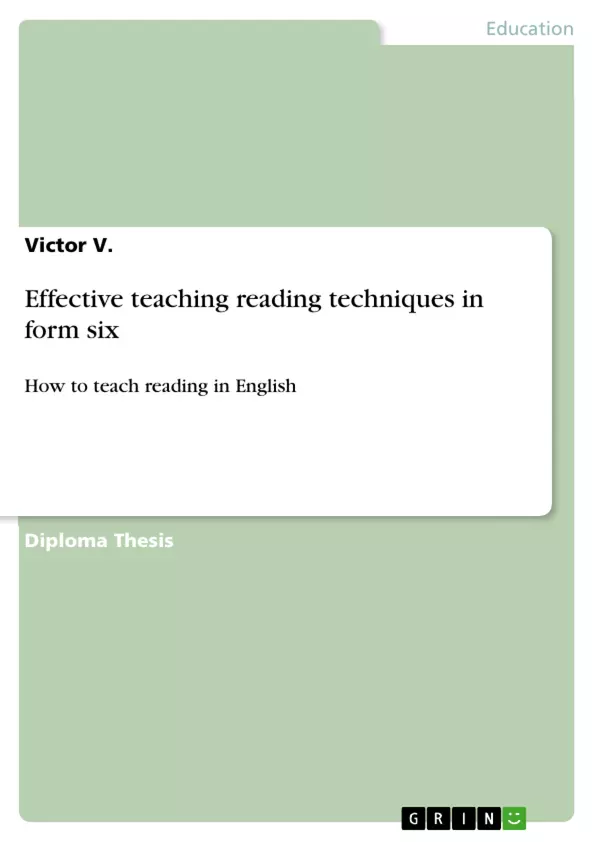The theme of the diploma paper is “Effective Teaching Reading Techniques in Form Six.” The diploma paper consists of 48 pages, 4 chapters, 5 sub-chapters, 6 tables, 6 figures and 6 appendices. The author of the paper has analysed different kinds of literature, such as scientific research and publications, course books, and scientific books referred to the teaching reading methods and approaches. In his practical research the author has tried to practise the most effective methods and approaches. All the success and failures have been described, analysed and taken into consideration.
The author of the diploma paper has chosen the reading topic because he discovered the contradiction between a great number of English lessons, qualitative course books, and usually poor reading skills in form six. The main conclusion is that the effective methods` variations improve reading skills, but this regularity does not usually apply to children having different psychological problems like shyness, diffidence, fear. At the same time the poor conclusion making ability and poor vocabulary is the main cause of poor reading and language comprehension.
Table of Contents
- Introduction
- Chapter 1 Cognitive Features
- 1.1. Motivation and Reading
- Chapter 2 Reading
- 2.1. Reading Methods
- 2.2. Pre-Reading
- 2.3. While-Reading
- 2.4. Post-Reading
- Chapter 3 Classroom Research Experiment
- Chapter 4 Conclusion
- List of Literature
Objectives and Key Themes
This diploma paper examines the effectiveness of various reading techniques in teaching English to Form Six students. The author analyzes literature and conducts practical research to identify and evaluate methods that enhance reading comprehension. The primary goal is to understand the challenges and opportunities presented by teaching reading skills to this age group.
- The importance of effective reading techniques in English language learning.
- The role of motivation and cognitive factors in reading comprehension.
- The effectiveness of different reading methods and approaches.
- The impact of classroom research experiments on student reading skills.
- The challenges and possibilities of teaching reading skills to Form Six students.
Chapter Summaries
The introduction outlines the importance of reading as a language skill and explores the challenges faced by students in comprehending English texts. Chapter 1 delves into the cognitive features related to reading, including motivation and its impact on reading comprehension. Chapter 2 examines various reading methods and approaches, focusing on pre-reading, while-reading, and post-reading techniques. Chapter 3 details the author's classroom research experiment, designed to evaluate the effectiveness of specific reading methods.
Keywords
This diploma paper focuses on the keywords: reading comprehension, reading techniques, English language learning, Form Six students, classroom research, and motivation.
- Citation du texte
- Victor V. (Auteur), 2008, Effective teaching reading techniques in form six, Munich, GRIN Verlag, https://www.grin.com/document/266616



